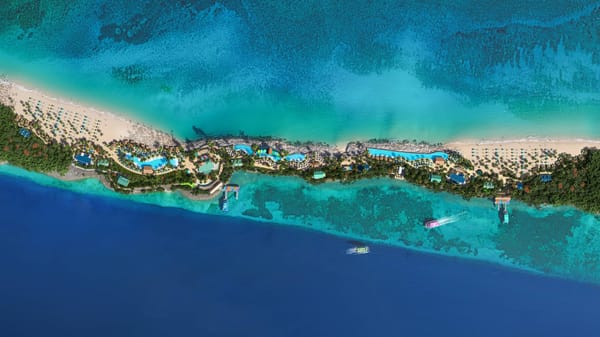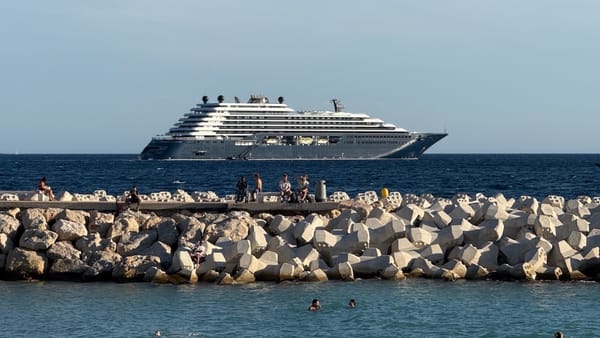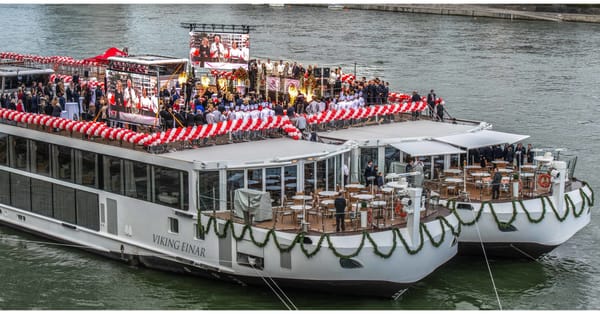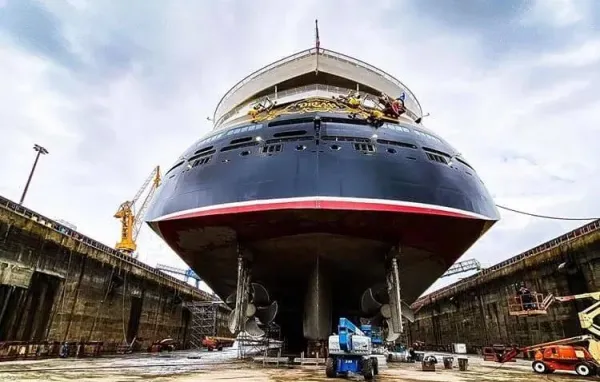Barcelona Faces Cruise Industry Backlash Over Pollution and Stricter Controls
As cruise tourism expands worldwide, cities like Barcelona weigh economic gains against mounting ecological impacts, spurring international debate over stricter oversight and sustainable policies.

The global cruise industry is poised for substantial growth, with the number of passengers expected to reach 42 million by 2028. However, this burgeoning sector faces intensifying scrutiny for its environmental and societal impact. Cruise ships, often described as "floating cities," contribute significantly to pollution, including air and water emissions, waste generation, and noise disturbance in the world’s coastal hubs. In cities like Barcelona, Venice, and Amsterdam, conflicts between economic benefits and environmental costs are reaching a tipping point, prompting calls for stricter regulations and greener operational practices.
Environmental Concerns: Air, Water, and Noise Pollution
Air Quality Challenges and Pollution Hotspots
Air emissions from cruise ships are a pressing concern, particularly in port cities where idling ships release pollutants such as sulfur oxides, nitrogen oxides, and particulate matter. Barcelona has emerged as the epicenter of this conflict. A 2023 report by the European Federation for Transport and Environment revealed that cruise liners operated by Carnival Corporation alone emitted 43% more sulfur oxides than all the cars in Europe combined, with Barcelona topping the list of the continent’s most polluted cruise hubs.
These emissions significantly degrade air quality, with residents reporting visible smoke stacks and health concerns. “You can feel it. You can see it," said Xavier Laballós, a Barcelona resident, referring to the thick emissions during peak cruise days. Local measurements near docks have found nitrogen oxide pollution levels five times higher than limits recommended by the World Health Organization. The combination of heavy fuel oil (HFO) usage and insufficient regulatory enforcement exacerbates the crisis, despite some operators transitioning to liquefied natural gas (LNG). LNG burns cleaner than HFO, but it poses its own challenges, including methane leakage, which is a potent greenhouse gas.
Water Pollution: Waste Discharges at Sea
Cruise ships generate enormous amounts of wastewater. The U.S. Environmental Protection Agency (EPA) estimates that a single 3,000-passenger ship produces 176,400 gallons of sewage per week, or over one billion gallons annually across the industry. This waste includes blackwater (toilet waste) and greywater (from sinks and laundries), both of which contribute to harmful algal blooms and oxygen-depleted dead zones in the ocean.
Additionally, cruise ships discharge bilge water, a toxic mix of oil, chemicals, and seawater, which poses severe risks to marine ecosystems and wildlife. Although wastewater treatment systems are available, non-compliance and under-regulation result in untreated or minimally treated waste polluting fragile marine habitats.
Noise Pollution and Ecosystem Disruption
The underwater noise generated by cruise ships interferes with marine life communication, feeding, and mating behaviors, destabilizing sensitive ecosystems. With growing cruise traffic, ambient noise levels in maritime regions have surged, threatening species dependent on sound for survival.
Solid Waste Generation
Cruise ships also contribute significantly to solid waste pollution. A one-week cruise typically generates about 50 tons of garbage, including plastics, food waste, and other debris, which often finds its way into the oceans. These factors amplify the global plastic pollution crisis and exacerbate damage to aquatic environments.
Port Cities' Responses
Barcelona’s Sustainability Measures
Barcelona, one of Europe’s busiest cruise hubs hosting over 200 ships annually, has taken preliminary measures to confront the challenges of cruise tourism. The city plans to reduce its seven cruise terminals to five by 2030 and is expanding shore-side electrical connections to allow ships to turn off their engines while docked. “The 1.6 million cruise ship visitors we see each year are not sustainable,” said Barcelona Mayor Jaume Collboni, reflecting the growing push to balance economic benefits with public health and quality of life.
The Barcelona Port Authority emphasizes electrification as a key strategy, aiming to equip all docks with shore power infrastructure by 2030. However, successful implementation will depend on adequate grid capacity and the greening of electricity generation.
Actions in Other Cities
- Venice banned large cruise ships from its historic center in 2021, citing environmental risks, though enforcement has been inconsistent.
- Santorini, Key West, Amsterdam, and Dubrovnik have implemented limits, taxes, and bans on cruise ships to address overtourism and pollution.
- California and parts of Northern Europe have set precedents for low-sulfur fuel enforcement and robust wastewater regulations, serving as models for Mediterranean ports considering stricter standards.
Industry Responses and Criticism
The Cruise Lines International Association (CLIA), which represents a significant share of the global cruise market, asserts that its members are investing in sustainable practices, including LNG adoption, carbon-free fuels, and shore-power capabilities. However, environmental organizations argue that these efforts amount to "greenwashing" rather than meaningful change.
"Cruising is a luxury product with significant environmental costs," said Sam Hargreaves of Transport & Environment. He advocates for solutions like implementing tourist levies to fund green technologies, stricter sulfur emissions rules, and independent monitoring of industry progress.
Activists in Barcelona have expressed sharper criticism, labeling cruise tourism as “harmful and unnecessary” while calling for its outright elimination. Local groups, such as Stop Cruise Ships, continue to exert pressure for more aggressive action, pointing to persistent health and environmental challenges exacerbated by growing visitor numbers.
Possible Solutions
Experts cite various strategies to mitigate the environmental impacts of cruise ships:
- Expanding shore power connections to allow ships to switch off engines at port.
- Phasing out open-loop scrubbers and adopting systems to limit scrubber washwater discharge.
- Strictly enforcing wastewater treatment and sulfur-emission compliance across fleets.
- Scaling investments in green propulsion technologies, such as carbon-free fuels and wind-assisted systems.
- Implementing transparent emissions reporting to align incentives with cleaner practices.
While progress has been made, climate experts argue that transitioning to low-carbon technologies and imposing enforceable international regulations are essential to fostering a more sustainable cruise tourism industry.
Frequently Asked Questions (FAQs)
What are the main environmental challenges associated with cruise ships?
Cruise ships contribute to air pollution, water contamination, noise disturbances, and solid waste disposal. These factors harm marine ecosystems, jeopardize biodiversity, and degrade air quality in port cities.
What measures are being implemented in Barcelona to curb cruise pollution?
Barcelona plans to close two of its seven cruise terminals by 2030, introduce shore-side power connections, and limit passenger numbers to manage environmental and social impacts.
Are LNG-powered cruise ships sustainable?
LNG reduces soot and sulfur emissions compared to heavy fuel oil but poses challenges such as methane leakage, making it a transitional option with trade-offs for global warming impacts.
How does shore power benefit port communities?
Shore power enables ships to connect to the local grid, reducing harmful emissions near port areas. However, its effectiveness depends on the source of the grid's energy and reliable infrastructure.
What are some proposed regulatory solutions for cleaner cruising?
Proposed solutions include stricter sulfur emission caps, enhanced wastewater treatment regulations, tourist taxes tied to green initiatives, and transparency in emissions monitoring.




